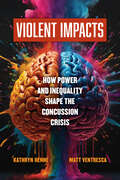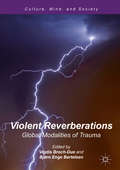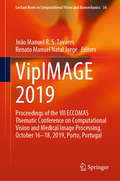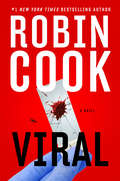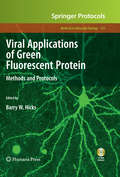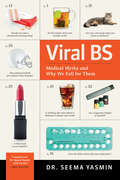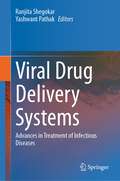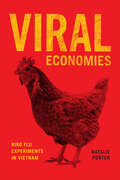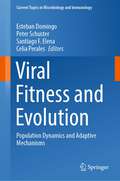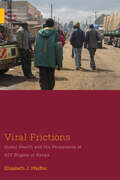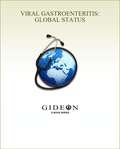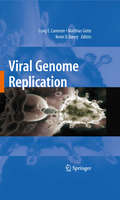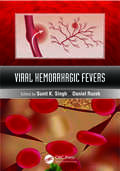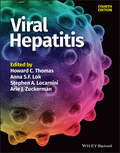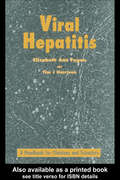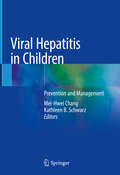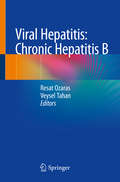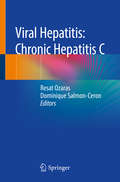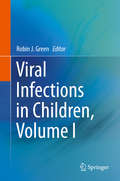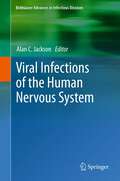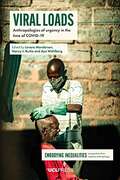- Table View
- List View
Violent Impacts: How Power and Inequality Shape the Concussion Crisis
by Matt Ventresca Kathryn HenneA free ebook version of this title is available through Luminos, University of California Press’s Open Access publishing program. Visit www.luminosoa.org to learn more. Concerns regarding brain injury in sport have escalated into what is often termed a "concussion crisis," fueled by high-profile lawsuits and deaths. Although athletes are central figures in this narrative, they comprise only a small proportion of the people who experience brain injuries, while other high-risk groups—including victims of domestic violence and police brutality—are all too often left out of the story. In Violent Impacts, Kathryn Henne and Matt Ventresca examine what is and what isn’t captured in popular discourse, scrutinizing how law, science, and social inequalities shape depictions and understandings of brain injury. Drawing on research carried out in Australia, Canada, and the United States, they illustrate how structural violence centers certain bodies as part of the concussion crisis while pushing others to the margins.
Violent Reverberations
by Bjørn Enge Bertelsen Vigdis Broch-DueThe contributions to this volume map the surprisingly multifarious circumstances in which trauma is invoked - as an analytical tool, a therapeutic term or as a discursive trope. By doing so, we critically engage the far too often individuating aspects of trauma, as well as the assumption of a universal somatic that is globally applicable to contexts of human suffering. The volume takes the reader on a journey across widely differing terrains: from Norwegian institutions for psychiatric patients to the post-war emergence of speech genres on violence in Mozambique, from Greek and Cameroonian ritual and carnivalesque treatments of historical trauma to national discourses of political assassinations in Argentina, the volume provides an empirically founded anti-dote against claiming a universal 'empire of trauma' (Didier Fassin) or seeing the trauma as successfully defined by the Diagnostic and Statistical Manual of Mental Disorders (DSM). Instead, the work critically evaluates and engages whether the term's dual plasticity and endurance captures, encompasses or challenges legacies and imprints of multiple forms of violence.
VipIMAGE 2019: Proceedings of the VII ECCOMAS Thematic Conference on Computational Vision and Medical Image Processing, October 16–18, 2019, Porto, Portugal (Lecture Notes in Computational Vision and Biomechanics #34)
by João Manuel R. S. Tavares Renato Manuel Natal JorgeThis book gathers full papers presented at the VipIMAGE 2019—VII ECCOMAS Thematic Conference on Computational Vision and Medical Image Processing—held on October 16-18, 2019, in Porto, Portugal. It discusses cutting-edge methods, findings, and applications related to 3D vision, bio- and medical imaging, computer-aided diagnosis, image enhancement, image processing and analysis, virtual reality, and also describes in detail advanced image analysis techniques, such as image segmentation and feature selection, as well as statistical and geometrical modeling. The book provides both researchers and professionals with extensive and timely insights into advanced imaging techniques for various application purposes.
Viral
by Robin CookIn this electrifying medical thriller from New York Times bestselling author Robin Cook, a family&’s exposure to a rare yet deadly virus ensnares them in a growing danger to mankind—and pulls back the curtain on a healthcare system powered by profit and greed. Trying to find some normalcy during the Covid-19 pandemic, Brian Murphy and his family are on a summer excursion in Cape Cod when his wife, Emma, comes down with concerning flu-like symptoms. But their leisurely return home to New York City quickly becomes a race to the local hospital as she suddenly begins seizing in the car. At the ICU, she is diagnosed with eastern equine encephalitis, a rare and highly lethal mosquito-borne viral disease seemingly caught during one of their evening cookouts. Complicating the situation further, Brian and Emma&’s young daughter then begins to exhibit alarming physical and behavioral symptoms, too. Emma&’s harrowing hospital stay becomes even more fraught when Brian receives a staggering hospital bill full of outrageous charges and murky language. To add insult to injury, his health insurance company refuses to cover any of the cost, citing dubious clauses in Brian&’s policy. Forced to choose between the ongoing care of family and bills he can never pay, and furious at a shockingly indifferent healthcare system, Brian vows to seek justice. But to get to the bottom of the predatory practices targeting his loved ones and countless others, he must uncover the dark side of an industry that has strayed drastically from its altruistic roots—and bring down the callous executives preying on the sick and defenseless before the virus can claim even more people . . .
Viral Applications of Green Fluorescent Protein
by Barry W. HicksOver the last ten years, Green Fluorescent Proteins, along with the other spectral variants, have emerged from near obscurity to become a powerful and versatile tool in scientific research. In Viral Applications of Green Fluorescent Protein: Methods and Protocols, leading investigators from around the world contribute detailed examples of both the construction and application of fluorescent proteins delivered by viruses in a format crafted to produce rapid, readily reproducible results. Written in the style of the popular and successful Methods in Molecular BiologyTM series, the chapters include brief introductions to the topics, lists of the necessary materials and reagents, step-by-step laboratory protocols, and Notes sections, which highlight tips on troubleshooting and avoiding known pitfalls. Cutting-edge and easy to use, Viral Applications of Green Fluorescent Protein: Methods and Protocols supplies researchers with an ideal guide to the many uses of GFP and a vital starting point for future studies utilizing this highly adaptable protein.
Viral BS: Medical Myths and Why We Fall for Them
by Seema YasminDissecting the biggest medical myths and pseudoscience, Viral BS explores how misinformation can spread faster than microbes.Can your zip code predict when you will die? Should you space out childhood vaccines? Does talcum powder cause cancer? Why do some doctors recommend e-cigarettes while other doctors recommend you stay away from them? Health information—and misinformation—is all around us, and it can be hard to separate the two. A long history of unethical medical experiments and medical mistakes, along with a host of celebrities spewing anti-science beliefs, has left many wary of science and the scientists who say they should be trusted. How do we stay sane while unraveling the knots of fact and fiction to find out what we should really be concerned about, and what we can laugh off? In Viral BS, journalist, doctor, professor, and CDC-trained disease detective Seema Yasmin, driven by a need to set the record straight, dissects some of the most widely circulating medical myths and pseudoscience. Exploring how epidemics of misinformation can spread faster than microbes, Dr. Yasmin asks why bad science is sometimes more believable and contagious than the facts. Each easy-to-read chapter covers a specific myth, whether it has endured for many years or hit the headlines more recently. Dr. Yasmin explores such pressing questions as• Do cell phones, Nutella, or bacon cause cancer?• Are we running out of antibiotics?• Does playing football cause brain disease?• Is the CDC banned from studying guns?• Do patients cared for by female doctors live longer? • Is trauma inherited?• Is suicide contagious?and much more.Taking a deep dive into the health and science questions you have always wanted answered, this authoritative and entertaining book empowers readers to reach their own conclusions. Viral BS even comes with Dr. Yasmin's handy Bulls*%t Detection Kit.
Viral Cultures: Activist Archiving in the Age of AIDS
by Marika CiforDelves deep into the archives that keep the history and work of AIDS activism alive Serving as a vital supplement to the existing scholarship on AIDS activism of the 1980s and 1990s, ViralCultures is the first book to critically examine the archives that have helped preserve and create the legacy of those radical activities. Marika Cifor charts the efforts activists, archivists, and curators have made to document the work of AIDS activism in the United States and the infrastructure developed to maintain it, safeguarding the material for future generations to remember these social movements and to revitalize the epidemic&’s past in order to remake the present and future of AIDS. Drawing on large institutional archives such as the New York Public Library, as well as those developed by small, community-based organizations, this work of archival ethnography details how contemporary activists, artists, and curators use these records to build on the cultural legacy of AIDS activism to challenge the conditions of injustice that continue to undergird current AIDS crises. Cifor analyzes the various power structures through which these archives are mediated, demonstrating how ideology shapes the nature of archival material and how it is accessed and used. Positioning vital nostalgia as both a critical faculty and a generative practice, this book explores the act of saving this activist past and reanimating it in the digital age. While many books, popular films, and major exhibitions have contributed to a necessary awareness of HIV and AIDS activism, Viral Cultures provides a crucial missing link by highlighting the powerful role of archives in making those cultural moments possible.
Viral Drug Delivery Systems: Advances in Treatment of Infectious Diseases
by Yashwant Pathak Ranjita ShegokarThe disability-adjusted life year (DALY) is a generic measure of health effect that can be used in cost-effectiveness analysis as an alternative to the quality-adjusted life year (QALY). Infectious diseases are one of the major to cause significant losses of DALY and QALY. Human infectious diseases are disorders that are triggered by the micro-organisms such as bacteria, fungi, viruses, or parasites. The majority of such diseases are contagious and create a public health menace. There are several reasons why infectious diseases are deadly diseases, and one of the primary reasons is the drug resistance developed over time. Drug resistance-associated mutations are linked to increasing drug efflux, modifications of the drugs, or their targets. Every year, new drugs are being approved by FDA to treat infectious diseases. Nonetheless, the infectious diseases will undoubtedly persist as permanent and main threats to humanity for now and in the future, primarily due to increased longevity that almost always comes at a cost of impaired immunity.A total of four books are covered under the series of Infectious drug diseases.- Malarial drug delivery systems- Tubercular drug delivery systems- Viral drug delivery systems- Infectious disease drug delivery systemsThe third volume of series is focused on viral drug delivery systems. Typically, virus attaches to the cells (referred as host cell) and releases its DNA or RNA inside the cell. In second stage, virus’s genetic material takes control of the cell and forces it to replicate the virus leading to onset of disease symptoms. DNA class of viruses include Herpes, Papilloma and Adeno viruses. RNA class of viruses include retroviruses, such as HIV immunodeficiency virus and SARS COV – 2 / Corona virus. This book addresses recent developments in viral drug delivery systems. It covers many different aspects of viral infections, ways to treat them using modern drug delivery systems like nano particulate carriers. The choice of viral delivery systems mainly depends upon the type of virus, duration of life cycle, presence of drug resistance, cellular and mucosal interaction of virus, accordingly gene or non-gene drug delivery systems are selected. Besides that, this book also reports global dynamics of viral diseases, future predictions of infection rate, current treatment options, details of drug carriers like nanoemulsions, polymeric nanoparticles, role of biofunctionalization, and phyto-molecules in treatment of viral infections particularly herpes, Covid-19, Ebola, HIV/AIDS, influenza and viral hepatitis.Audiences from a broad range of groups, from researchers, academicians, and public health bodies to regulatory experts, can benefit from the compiled information to learn more about patient needs and current research advances in the field of viral drug delivery research.
Viral Economies: Bird Flu Experiments in Vietnam
by Natalie PorterOver the last decade, infectious disease outbreaks have heightened fears of a catastrophic pandemic passing from animals to humans. From Ebola and bird flu to swine flu and MERS, zoonotic viruses are killing animals and wreaking havoc on the people living near them. Given this clear correlation between animals and viral infection, why are animals largely invisible in social science accounts of pandemics, and why do they remain marginal in critiques of global public health? In Viral Economies, Natalie Porter draws from long-term research on bird flu in Vietnam to chart the pathways of scientists, NGO workers, state veterinarians, and poultry farmers as they define and address pandemic risks. Porter argues that as global health programs expand their purview to include life and livestock, they weigh the interests of public health against those of commercial agriculture, rural tradition, and scientific innovation. Porter challenges human-centered analyses of pandemics and shows how dynamic and often dangerous human-animal relations take on global significance as poultry and their pathogens travel through global livestock economies and transnational health networks. Viral Economies urges readers to think critically about the ideas, relationships, and practices that produce our everyday commodities, and that shape how we determine the value of life—both human and nonhuman.
Viral Fitness and Evolution: Population Dynamics and Adaptive Mechanisms (Current Topics in Microbiology and Immunology #439)
by Peter Schuster Esteban Domingo Santiago F. Elena Celia PeralesThis book unifies general concepts of plant and animal virus evolution and covers a broad range of topics related to theoretical and experimental aspects of virus population dynamics and viral fitness. Timely topics such as viral mechanisms to cope with antiviral agents, the adaptability of the virus to new hosts, emergence of new viral phenotypes, and the connections between short- and long-term virus evolution are included. By comparing plant and animal viruses, universal mechanisms responsible for fitness variations, viral emergence and disease mechanisms are explored. Although emphasis is put on specific plant and human viral pathogens, relevant similarities and differences to other viruses are highlighted. Additionally, readers will learn more about the adaptability of coronaviruses, including the recently emerged SARS-CoV-2, the causative agent of the COVID-19 pandemic. The book is aimed at students and scientists interested in basic and applied aspects of plant and animal virus population dynamics and evolution.
Viral Frictions: Global Health and the Persistence of HIV Stigma in Kenya (Medical Anthropology)
by Elizabeth J. PfeifferViral Frictions takes the reader along a trail of intersecting narratives to uncover how and why it is that HIV-related stigma persists in the age of treatment. Pfeiffer convincingly argues that stigma is a socially constructed process co-produced at the nexus of local, national, and global relationships and storytelling about and practices associated with HIV. Based on a decade of fieldwork in one highway trading center in Kenya, Viral Frictions offers compelling stories of stigma and discrimination as a lens for understanding broader social processes, the complexities of globalization and health, and their profound impact on the everyday social lives and relationships of people living through the ongoing HIV epidemic in sub-Saharan Africa. This highly engaging book is ideal reading for those interested in teaching and learning about intersectionality, as Pfeiffer meticulously demonstrates how HIV stigma interacts with issues of treatment, race, ethnicity, class, gender, sexuality, social change, and international aid systems.
Viral Gastroenteritis: Global Status 2010 edition
by Dr Stephen Berger Gideon InformaticsViral Gastroenteritis: Global Status is one in a series of GIDEON ebooks which summarize the status of individual infectious diseases, in every country of the world. Data are based on the GIDEON database (www.gideononline.com) which relies on standard text books, peer-review journals, Health Ministry reports and ProMED, supplemented by an ongoing search of the medical literature. Chapters are arranged alphabetically, by country name. Each section is divided into five subsections. 1. Descriptive epidemiology 2. Summary of clinical features 3. Global status of the disease 4. Status of the disease in a specific country 5. References
Viral Genome Replication
by Kevin D. Raney Craig E. Cameron Matthias GotteViruses are responsible for a variety of human, animal, and plant diseases and now represent potential agents of terror. Academic, government, and corporate laboratories have devoted years of effort to the development of strategies to prevent or treat viral infections. Central to the multiplication strategy of all viruses is the process of genome replication. Enzymes critical to this step of the lifecycle have proven to be tractable targets for the development of antiviral agents. Furthermore, genome replication is essential for virus spread and is the main target for the development of antiviral agents. By combining studies of both RNA and DNA viruses - and more - into a single volume, the editors have created a mechanism for cross-talk between the fields that will produce synergy and could lead to more rapid discovery of approaches to treat viral infections.
Viral Hemorrhagic Fevers
by Sunit K. Singh Daniel RuzekViral hemorrhagic fevers have captured the imagination of the public and made their way into popular books and movies by virtue of their extreme virulence and mysterious origins. Since 2001, concerns have grown about the potential use of many hemorrhagic fever viruses as biological weapons. This has led to a resurgence in research to develop improv
Viral Hepatitis
by Arie J. Zuckerman Howard C. Thomas Anna S. Lok Stephen A. LocarniniThe 4th edition of Viral Hepatitis covers comprehensively the entire complex field of infections caused by all of the different hepatitis viruses, which affect many millions of people throughout the world with considerable morbidity and mortality.Howard Thomas and Arie Zuckerman are joined by Anna Lok from the USA and Stephen Locarnini from Australia as Editors. They have recruited leading researchers and physicians from many countries, who have produced an authoritative account of current knowledge and research on this important infection, including new insights into immune response to HBV and HCV. The result is a comprehensive account on all aspects of viral hepatitis, including rapid advances in the diagnosis, management, treatment and prevention of a complex infection, which in the case of hepatitis B, C and D may lead to severe complications including chronic hepatitis, cirrhosis and hepatocellular carcinoma.The latest edition of Viral Hepatitis offers an essential resource of current information for hepatologists, gastroenterologists, infectious diseases specialists and other clinicians, researchers, public health physicians and National and International Health Authorities.
Viral Hepatitis
by E.A. Fagan T.J. HarrisonThis book aims to bridge the widening rift between clinical and molecular aspects of viral hepatitis by providing an up-to-date overview of the field. The focus is practical and covers the limitations of clinical diagnosis, the interpretation of tests bas
Viral Hepatitis in Children
by Maureen M. JonasViral Hepatitis in Children: Unique Features and Opportunities is a unique volume that has been created to address the special considerations regarding viral hepatitis in children. It includes the latest information and recommendations specifically directed at the pediatric population, and highlights the knowledge gaps which will need to be filled to improve our understanding of these infections and treatment of this special group. Experienced practitioners from around the world have contributed these reviews, incorporating the latest studies, the current recommendations, and the distinctive pediatric issues that shape clinical care. This material will determine the research agenda for this field going forward. Viral Hepatitis in Children: Unique Features and Opportunities is a valuable resource for pediatricians, pediatric gastroenterologists, hepatologists and infectious disease specialists that care for children with viral hepatitis.
Viral Hepatitis in Children: Prevention and Management
by Mei-Hwei Chang Kathleen B. SchwarzThis book is aimed to emphasize the rationale and importance of prevention and management of viral hepatitis in children, providing cutting edge knowledge. Viral hepatitis is a major health problem in the world. Although most complications of viral hepatitis are observed in adults, primary infection with hepatitis viruses often occurs during infancy or childhood. To better control viral hepatitis, prevention and therapy if possible should be started in childhood. This book offers updated and unique information about viral hepatitis in children, which has vitally important impact on global disease outcome and control, yet not discussed as frequently as viral hepatitis in adults in previous medical literature. Better prevention and management strategies are covered, starting from infancy and childhood, and even earlier during fetal life. It will be very helpful for better control of viral hepatitis both for daily practice and for developing future strategies and directions. If we can successfully control viral hepatitis in children, there will be very little remaining chronic hepatitis and related complications such as liver cirrhosis or hepatoma in adults. We hope readers, including medical students, researchers, pediatricians, family medicine physicians, infectious disease personnel, public health workers, gastroenterologists, hepatologists and parents of children with chronic hepatitis, will be benefited by reading this book.
Viral Hepatitis: Acute Hepatitis
by Resat Ozaras Joop E. ArendsThis book presents up-to-date, practically oriented information on major topics in acute hepatitis. The coverage encompasses epidemiology; diagnosis, including molecular methods; treatment and challenges; and the management of co-infections. The book opens by examining the local and global epidemiology of acute hepatitis. Detailed attention is then paid to each of acute hepatitis A, acute hepatitis B, acute hepatitis C, hepatitis D co-infection, and hepatitis E. Acute Hepatitis will be of high value for general practitioners and specialists in gastroenterology, infectious diseases, and internal medicine. It will be international in scope in terms of both authorship and appeal.
Viral Hepatitis: Chronic Hepatitis B
by Resat Ozaras Veysel TahanThis book presents up-to-date, practically oriented information on major topics in chronic hepatitis B. The coverage encompasses epidemiology; diagnosis, including molecular methods; treatment and challenges; and the management of co-infections. Readers will also find guidance on the invasive and non-invasive assessment of fibrosis in HBV infection and the prevention of mother-to-child transmission of HBV. Management of chronic hepatitis B in children is considered separately, and emerging drugs that hold promise for the treatment of chronic HBV infection are discussed. Chronic Hepatitis B will be of high value for general practitioners and specialists in gastroenterology, infectious diseases, and internal medicine. It will be international in scope in terms of both authorship and appeal.
Viral Hepatitis: Chronic Hepatitis C
by Resat Ozaras Dominique Salmon-CeronThis book presents up-to-date, practically oriented information on major topics in chronic hepatitis C. The coverage encompasses epidemiology; diagnosis, including molecular methods; treatment and challenges; and the management of co-infections. Readers will find guidance on pretherapeutic evaluation with respect to disease severity and extrahepatic manifestations. Resistance to antiviral treatment and its management are discussed, and the nature of optimal follow-up is addressed in detail. Treatment of HCV/HIV co-infection is considered separately, and the approach in special patient populations is thoroughly examined. Chronic Hepatitis C will be of high value for general practitioners and specialists in gastroenterology, infectious diseases, and internal medicine. It will be international in scope in terms of both authorship and appeal.
Viral Infections in Children, Volume I
by Robin J. GreenThe purpose of this book is to provide a synthesis of the ever evolving field of pediatric viral infections. The most common and exotic pediatric viral infections are fully reviewed in this first one of a two volume set. All contributions are written by recognized experts in the field. The publication will appeal to medical microbiologists, practitioners, medical students and other health care providers with a pediatric interest. The known literature on viral infections in children is summarized and discussed in the light of changes in thinking as a result of novel and new evidence.
Viral Infections in Children, Volume II
by Robin J. GreenThis second one of a two volume set will be of interest to medical microbiologists, practitioners, medical students and other health care providers who are engaged in management and treatment of pediatric viral infections. New evidence on topics related to better clinical management of patients is presented. The book may double as a clinical guide to care with algorithms, Practice Points and photographs and therefore aid the clinical decision making in management of sick children.
Viral Infections of the Human Nervous System
by Alan C. JacksonViral infections of the nervous system are important because they are associated with high morbidity and mortality. A variety of pathogenetic mechanisms are involved in these infections and an understanding of the pathogenesis is essential in understanding the diagnostic and clinical management aspects of the disease. Specialized investigations are often necessary for definitive diagnosis, although a presumptive diagnosis should often be suspected on the basis of the clinical features. Many of the chapters in this book are written by neurologists who are experts in basic science research of their topic in addition to active clinical practice in their specialty.
Viral Loads: Anthropologies of Urgency In the Time of Covid-19 (Embodying Inequalities: Perspectives from Medical Anthropology)
by Lenore Manderson Ayo Wahlberg Nancy J. BurkeDrawing upon the empirical scholarship and research expertise of contributors from all settled continents and from diverse life settings and economies, Viral Loads illustrates how the COVID-19 pandemic, and responses to it, lay bare and load onto people’s lived realities in countries around the world. A crosscutting theme pertains to how social unevenness and gross economic disparities are shaping global and local responses to the pandemic, and illustrate the effects of both the virus and efforts to contain it in ways that amplify these inequalities. At the same time, the contributions highlight the nature of contemporary social life, including virtual communication, the nature of communities, neoliberalism and contemporary political economies, and the shifting nature of nation states and the role of government. <p><p> Over half of the world’s population has been affected by restrictions of movement, with physical distancing requirements and self-isolation recommendations impacting profoundly on everyday life but also on the economy, resulting also, in turn, with dramatic shifts in the economy and in mass unemployment. By reflecting on how the pandemic has interrupted daily lives, state infrastructures and healthcare systems, the contributing authors in this volume mobilise anthropological theories and concepts to locate the pandemic in a highly connected and exceedingly unequal world. The book is ambitious in its scope – spanning the entire globe – and daring in its insistence that medical anthropology must be a part of the growing calls to build a new world.
